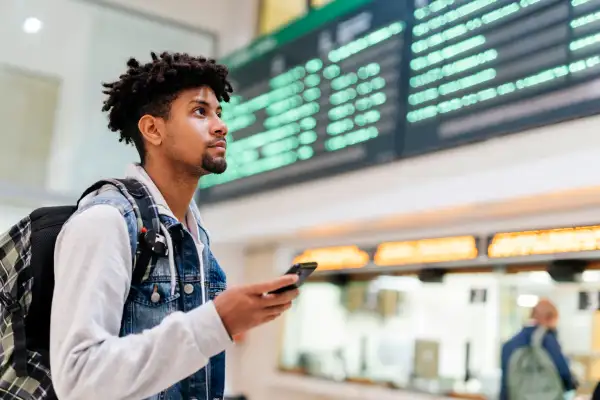Trip Preparation Guide

Shutdowns are easing, and now is the perfect time to consider visiting destinations you’ve always wanted to see. But, between booking your trip and ensuring your suitcase has everything you need to enjoy it, trip preparation can get complicated.
This travel and vacation preparation guide covers how to prepare for a trip more effectively so you can get as much out of it as possible. Keep reading to find a trip checklist you can use for your next adventure.
Regardless of how you travel, checklists will help you remember everything you need to do and pack. Consider keeping separate lists for each type of travel and prep. Preparation will be a breeze regardless of whether you’re driving or flying or the length of the trip.
1. Research your destination
Destination matters, and the best places to travel are the ones you want to visit the most. Researching before you book a trip will help you get the most out of your dollars and days.
When traveling to a larger city, research information about different neighborhoods, including destination-specific travel guides and crime statistics. Identify major points of attraction such as historical landmarks, theme parks and museums. Make sure there's something for each traveler in your group.
If you’re traveling to a more rural location, check out regional events like parades and festivals and plan your trip around those. Consider finding a largely self-contained neighborhood if you want to reduce driving.
Your research should address the following:
- Weather
- Transportation options
- Best time of the year to visit
- Travel insurance options
- Local customs
- Prices for accommodations
You may also have personalized needs like accessibility or dietary restrictions. Find out if your destination can accommodate those. Similarly, review the purpose or goal of your trip and confirm that you can accomplish it at a price point you can afford.
2. Create a budget that leaves room for unexpected expenses
Creating a budget for your trip will help you travel without harming your financial goals. In most cases, you’ll need to consider at least the following expenses in your budget:
- Transportation costs (flights, gas, rental cars, rideshare, etc.)
- Accommodations
- Meals and tips
- Souvenirs
- Activities
- International cell phone plans
Because travel can be unpredictable, it’s wise to create room in your budget for expenses you don't expect. That will allow you to continue enjoying your trip, even if it costs more than you thought it would. These costs can include:
- Currency conversion and foreign transaction fees
- Baggage fees
- Hotel taxes
- Emergency medical and travel expenses
Check your existing credit cards for travel deals, including discounts or cash back on travel expenses. It’s also worth mentioning that some of the best travel credit cards offer built-in insurance for travel-related purchases you make with the credit card.
3. Learn common words and phrases
If you’re going on a trip to a non-English-speaking destination, learning some basic phrases is essential. Doing so can help you avoid ordering the wrong dish in a restaurant or inadvertently saying something embarrassing to a local in a pub.
Thankfully, it’s never been easier to communicate effectively in another language. Here are some ways to learn the local language:
Online research
Research what you want to say through a website like Google Translate. Then write down helpful phrases and keep them close to reference them when needed.
Language apps
If you’d like to learn more than just common travel phrases or translate on the go, there are apps for that. These are some of the most popular options:
- Duolingo: The Duolingo app allows you to learn helpful travel phrases through basic grammar lessons.
- Anki: Anki uses flashcards from pre-made decks. You can also create your own based on your travel needs.
- Waygo: The Waygo app converts written scripts in Asian countries.
- Speak & Translate: Speak & Translate is a mobile app that translates what you want to say into a chosen language — even offline.
Translation books
Travel-sized translation books will ensure you can communicate with locals effectively, even if you can’t access your translation apps. That's especially helpful if your translation app doesn’t offer an offline mode.
4. Book plane tickets and accommodations well in advance
The day of the week you reserve hotel rooms and plane tickets can significantly impact what you pay for them.
A study by Google on finding the best flight deal provides the following insights:
- Flights departing on Monday, Tuesday or Wednesday are about 12% cheaper than weekend departures.
- You can save as much as 20% by choosing a flight with a layover.
- You’ll only save an average of 1.9% by shopping for tickets on Tuesdays, Wednesdays or Thursdays instead of over the weekend.
If you need to book accommodations, Reader's Digest offers strategies for finding the best hotel deal:
- The best hotel values are typically available on Mondays for domestic travel and Tuesdays for international.
- You can save money by booking a hotel at night.
- Booking your hotel the day before or the day of your stay can help you save up to 25%.
If you’re taking a last-minute trip, travel sites like Expedia, Kayak and Priceline may help you avoid overpaying for a flight. However, you should compare options across many websites to find the best price before you commit.
5. Make physical and digital copies of your travel documents
You’ll want easy access to your travel documents in every situation. Keep track of essential documents by making digital and physical copies of the following:
- Plane tickets
- Booking confirmations
- Passports or driver’s licenses
- Insurance documents
6. Purchase a travel insurance policy
Travel insurance provides financial protection for your trip. The best travel insurance companies charge between 4% and 12% of your total trip price, so you should expect to pay around $200 to $600 for a $5,000 trip.
Travel coverage can vary significantly from one company and plan to another. While most travel insurance providers offer coverage for medical emergencies, lost baggage and missed flights, coverage amounts and requirements vary by policy.
You’ll find the best fit for your needs by comparing the type of travel insurance you want across multiple providers.
As you get ready for your vacation or trip, prepare yourself for emergencies and other unexpected situations. Make a list of local emergency contacts for wherever you're traveling, and familiarize yourself with emergency procedures that differ from what you’re used to.
If you’re traveling to an international location, register for the Smart Traveler Enrollment Program (STEP) — especially if you’re visiting an area with a Level 4 travel advisory. STEP provides information about vaccinations, travel requirements, visas and safety updates from the U.S. Embassy in each country. It also makes it easier for the consulate to contact you if needed.
8. Pack the essentials
Of course, no travel preparation is complete without packing what you need to enjoy your stay. Overpacking can make travel more difficult and expensive. Still, you want to take all the necessities, especially if you can’t purchase them at your destination.
Road trip preparation should include packing items for your vehicle, like jumper cables and a spare tire. When packing for a flight, take the essentials but make sure you can haul everything through an airport and on the plane.
Your packing list should include:
- Prescription medications
- Your phone charger with an adapter for your destination
- Credit and debit cards
- Local currency
- Basic first aid supplies
- Devices with fully-charged batteries and necessary chargers
- An extra pair of glasses
- Over-the-counter medications unavailable at your destination
If you’re traveling with kids, pack things to keep them happy and entertained. These items may include:
- Snacks
- Activity packs
- Headphones and other electronics
- Books
- Blankets
- Other travel-sized items your kids love
When it comes to clothing, choosing layers you can coordinate can accommodate your needs in any type of weather without overpacking. Also consider fabric types while packing. For example, wool and cotton can keep you warmer in cold climates, so you can leave the extra jacket at home.
Clothing items to keep you comfortable in any weather include:
- Jeans
- Shorts
- Sweaters
- Long- and short-sleeved shirts
- Accessories to dress up an outfit
9. Make necessary changes to your phone plan
Your domestic phone plan typically won’t work when you go abroad. You can buy an international phone plan or get a new SIM card to fix that.
Upgrading to an international plan allows you to use your phone as usual. However, doing so may be more expensive than other options. Purchasing a new SIM card takes some extra work but can save you money because you can use it with a prepaid or pay-as-you-go plan.
10. Notify your bank and credit card companies of your travel plans
When preparing for international travel, contact your bank and credit card companies to notify them of where you’ll be traveling, when and for how long. Not every financial institution requires this, but failing to do so may result in declined purchases or other issues. Not only can this be embarrassing, but it may also leave you without access to your money when traveling internationally.
Your financial institution will likely have a guide explaining how to prepare for international travel, so contact customer service or look on its website.
11. Prepare your home for your time away
When you return from a long trip, you want your home to feel warm and inviting. Completing the following chores before you leave can make that possible:
- Mow the lawn and water plants
- Take out the trash and recycling
- Remove perishables from your refrigerator
- Sweep your floors and wipe down counters
Also take care of the following home-related tasks:
- Find a solution for pet and childcare, if necessary
- Reduce your thermostat and water heater settings to save energy
- Ask a neighbor to pick up your mail or place a hold at the post office
- Unplug idle electronics
- Suspend delivery of your newspaper, water jugs and similar subscriptions
- Have a few meals ready in the freezer so you can postpone grocery shopping when you get back
If you plan on being away from home for a long time, consider asking someone you trust to check on your house periodically. If you have security cameras with remote viewing capabilities, you can also keep an eye on your property.
12. Arrive at the airport well before departure
Make sure you get to the airport early enough on the day of your departure. The general rule is to arrive at the airport at least two hours before departure for a domestic flight and at least three hours early for an international one. However, it can vary based on the airport you’re flying from and when you depart.
For example, Fridays at major airports like LAX can be very busy — especially during peak travel seasons such as spring break, early summer and the holidays. But if you’re flying out of a small regional airport during the middle of the week, you may be able to get away with arriving closer to your departure time.
Consider wearing slip-on shoes and keep items you may need to pull out of your bags at security accessible, such as liquids and electronics. TSA PreCheck allows you to get through security faster and with less hassle.
Preparing for a vacation can be stressful, but creating a good travel list and sticking to it can help you avoid overwhelm and make your next trip more enjoyable. Review this travel preparation checklist as you start thinking about your next vacation. It can be a resource for ensuring you have the best trip possible.
